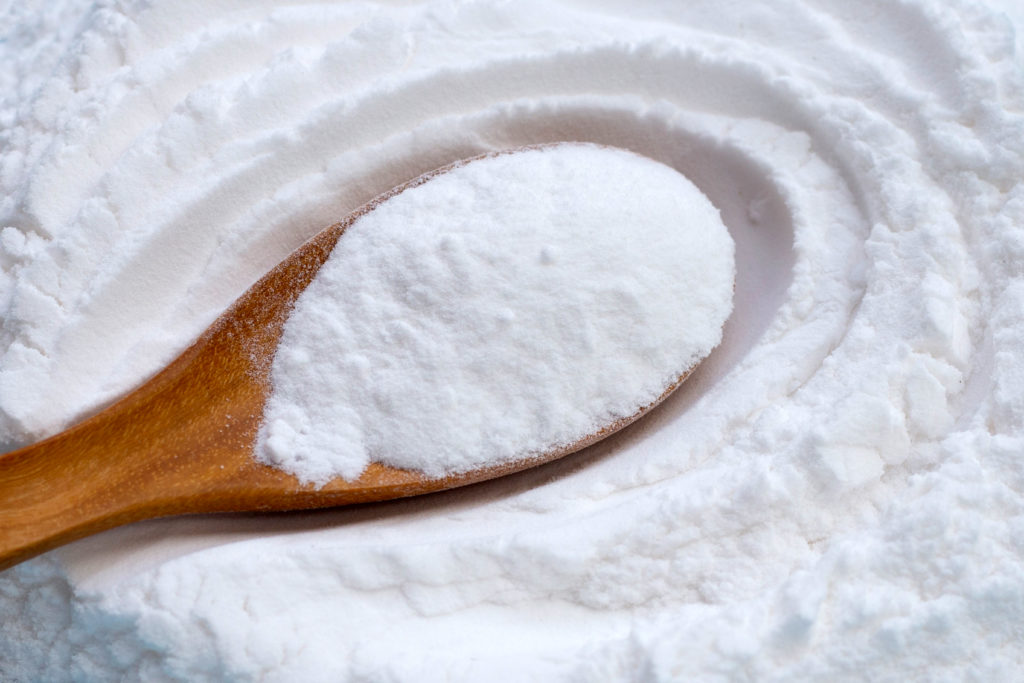Sodium Bicarbonate
Sodium Bicarbonate Specifications
Sodium bicarbonate also known by the common name baking soda, is a chemical compound with the formula of NaHCO3. It is readily soluble in water or mineral springs and has a white crystalline or powder appearance. The mineral nahcolite or thermokalite is the source of sodium bicarbonate in the natural world. An amphoteric substance, sodium bicarbonate reacts with bases or acids. When combined with acetic acid, it can create sodium acetate. Carbonates are also created when it interacts with basic substances like sodium hydroxide. At a temperature exceeding 149°C, sodium bicarbonate will break down into sodium carbonate, a more stable compound that also yields water and carbon dioxide as a byproduct.


Manufacturing Process
The Solvay technique can be used to create sodium bicarbonate. In the 1860s, Ernest Solvay invented this procedure by mixing sodium chloride, carbon dioxide, and ammonia in water. This procedure generates sodium bicarbonate, which can be changed into soda ash (Na2CO3) or washing soda (Na2CO3.10H2O). Listed below is the manufacturing process of sodium bicarbonate:
1. Production of Sodium Bicarbonate
Sodium chloride reacts in water with carbon dioxide and ammonia to produce this reaction. In this reaction, calcium carbonate serves as the carbon dioxide source, while calcium oxide, which is produced as a byproduct, is used to separate ammonia from ammonium chloride. Dry ice is another source of carbon dioxide. The response is:
NaCl(aq) + NH3(aq) + CO2(s) + H2O → NH4Cl(aq) + NaHCO3(s)
2. Extraction of Sodium Bicarbonate
Sodium bicarbonate and ammonium chloride are the byproducts of the reaction in Step 1. The two substances are both soluble at room temperature. However, ammonium chloride is more soluble than sodium bicarbonate at temperatures lower than room temperature, making it simpler to remove the crystal from the solution. Reacting calcium hydroxide with ammonium chloride is another way to remove sodium bicarbonate from ammonium chloride. Ammonia gas, water vapor, and liquid calcium chloride are the byproducts of this procedure.
Sodium Bicarbonate Grades & TDS


1. Food Grade
In the food industry, sodium bicarbonate is used as a systemic alkalizer, buffer, electrolyte replenisher, and in topical cleansing treatments.


2. Feed Grade
Feed grade sodium bicarbonate is used mostly in dairy rations as a source of extra sodium to boost dietary cation-anion difference (DCAD) and bicarbonate to buffer the rumen.


3. Industrial Grade
In the industrial grade, sodium bicarbonate has many uses such as fire extinguisher, removing paint, neutralization of acids and bases, as a cleaning agent.
Applications


1. Food & Baking Preparation
Sodium bicarbonate is primarily used as a leavening agent in baking. Sometimes, it is also used for green vegetables baking to give them a bright green color.


2. Personal Care Products & Medicines
Sodium bicarbonate aids in regulating an item’s acid-base balance to prevent spoilage in skin care and personal care goods like lotions and bath salts. Sodium bicarbonate found in toothpaste helps to eliminate stains from teeth. Due to its ability to balance unpleasant, acidic smells, it is also frequently used in deodorant.
Additionally, antacid medications that cure acid reflux and reduce heartburn contain sodium bicarbonate as an active component. It functions by immediately neutralizing stomach acid and momentarily easing acid reflux symptoms.


3. Cleaning Products & Solvents
In cleaning, washing, and degreasing products, sodium bicarbonate is a frequent ingredient. In cleaning solutions, vinegar and sodium bicarbonate can combine to form a solution that aids in clearing oven dirt and clogged drains. Grease or burnt residues can be removed quite well because of its light abrasiveness.
By raising the pH level of the water, which aids in removing dirt from fibers and produces fresher laundry, sodium bicarbonate’s chemical capabilities can also assist laundry detergent work more effectively.
